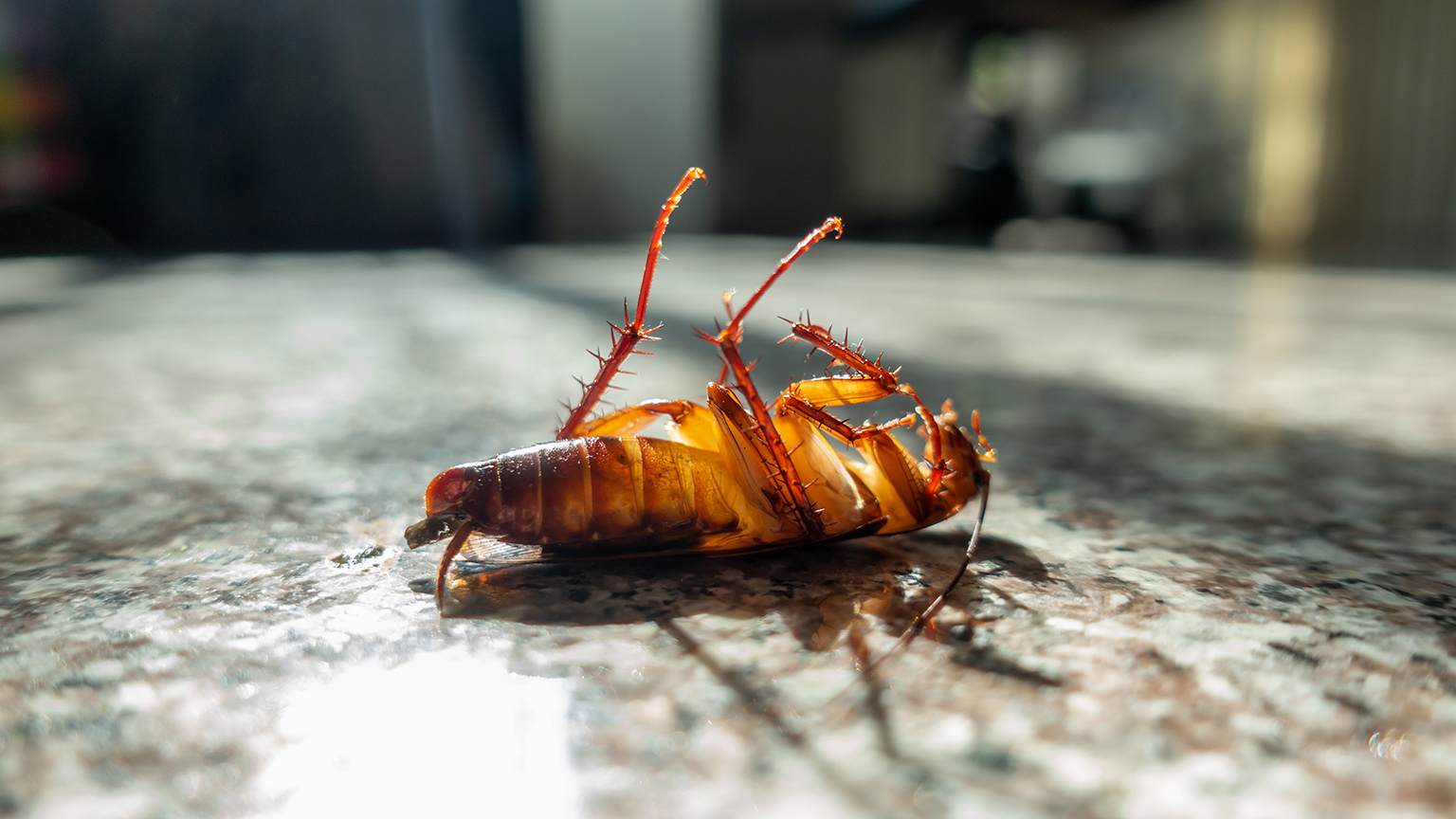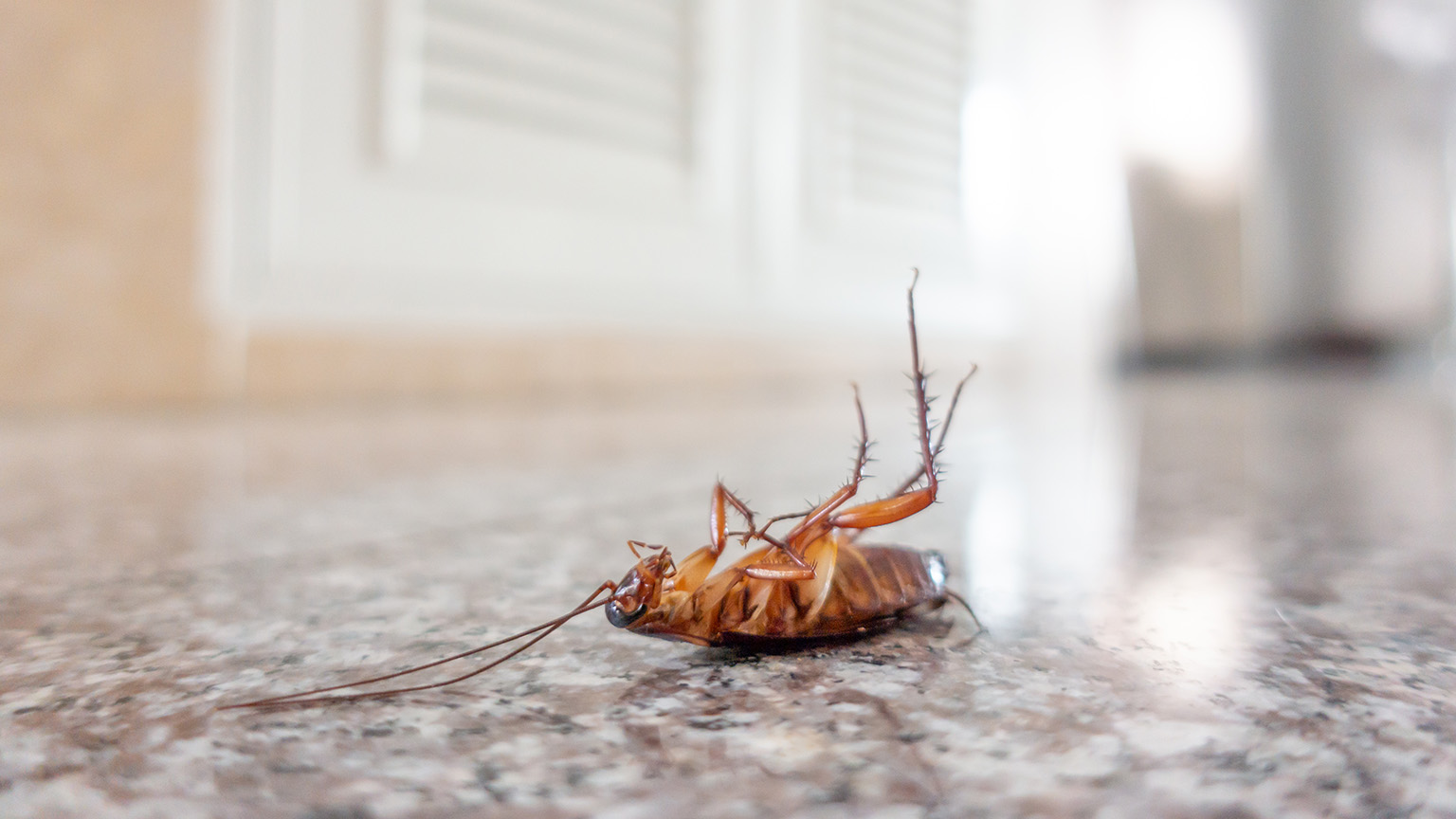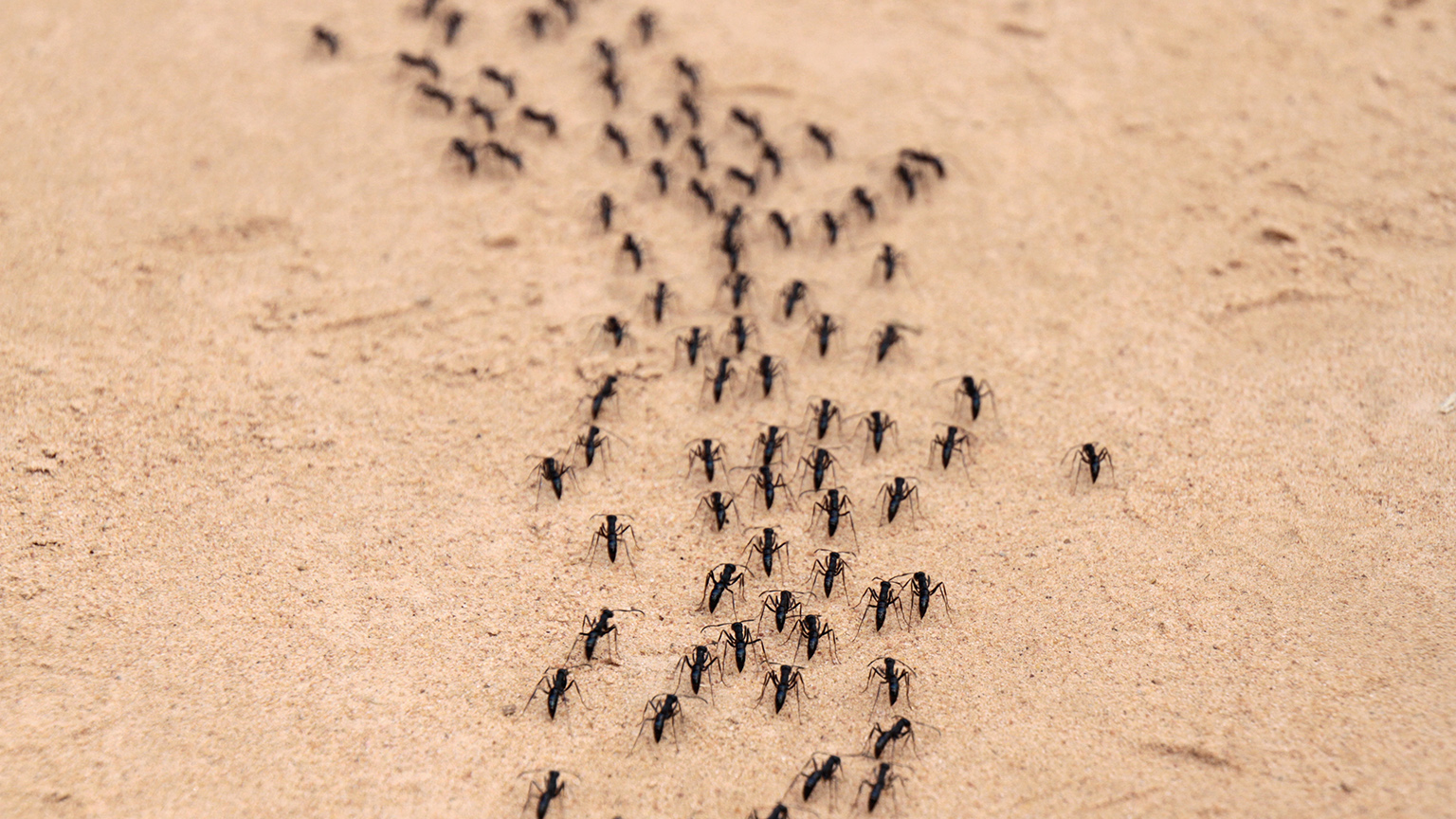Last updated: July 16, 2025
Cockroach identification is crucial for effective pest control because different species require different treatment approaches, have varying levels of health risks, and exhibit distinct behavioral patterns that affect elimination strategies.
Picture this: You’re getting your late-night glass of water when you flick on the kitchen light and spot a brown, scurrying shape disappearing behind your toaster. Your heart skips a beat—is that a cockroach? And more importantly, if so, what type is it?
If you’re a homeowner along Queensland’s Sunshine Coast or North Brisbane, you’re not alone in this scenario. Here’s what every Queensland homeowner should know about cockroach identification:
- Australia hosts over 450 native cockroach species, but only 6 commonly invade homes
- Misidentifying cockroach species leads to treatment failure in 67% of DIY attempts
- Each species has unique preferences for food, water, and hiding spots
- Proper identification determines whether you’re dealing with a minor nuisance or a serious health threat
Ready to become a cockroach identification expert? Let’s dive in.
Why Proper Cockroach Species Identification Is Critical
Cockroach treatment effectiveness depends entirely on knowing your species. Different cockroach species reproduce at vastly different rates, with German cockroaches growing from egg to reproductive adult in approximately 50-60 days compared to other species that take months.
Consequences of Misidentification
Misidentifying the cockroach species costs you more than just money:
- Wrong treatment methods: Baits effective for German cockroaches may be ignored by Oriental cockroaches
- Wasted money on ineffective products: Generic sprays rarely work long-term on established infestations
- Prolonged infestation periods: Misidentified species can multiply while you’re using the wrong approach
- Increased health risks: Some species carry more dangerous pathogens than others
According to pest control professionals, homeowners correctly identify cockroach species only 43% of the time without expert help. That’s why understanding the key differences between species is so important.
3-Step Quick Cockroach Identification Method
This three-step approach will help you better identify what type of cockroach you might be dealing with.
Step 1: Size Assessment
Size is your first clue. Here’s how common Queensland cockroaches measure up:
- German cockroach: 13-16mm (smaller than a 20-cent coin)
- Brown-banded cockroach: 11-14.5mm (similar to German Cockroaches)
- Oriental cockroach: 20-25mm (similar to a 50-cent coin)
- Australian cockroach: 23-35mm (larger than a 50-cent coin)
- American cockroach: Up to 53mm (larger than a $2 coin)
Step 2: Color and Markings
Paying attention to the colour and markings gets you another step closer to accurately identifying what type you’re dealing with.
The Australian cockroach is brown with a distinctive yellow line around its head and yellow markings on the thorax and wings, while German cockroaches are tan or light brown with two distinct dark brown lines running along the edge of their body.
Step 3: Behavior Patterns
Where you find cockroaches tells you a lot:
- Kitchen and bathroom areas: Likely German or brown-banded
- Basements and drains: Probably Oriental cockroaches
- Outdoor areas entering the home: Could be Australian or American
- Upper floors and wardrobes: Often brown-banded
- Around lights at night: Possibly smoky brown (they’re attracted to light)
Visual element suggestion: Create a size comparison chart showing each species next to common household items like coins and measuring rulers.
- Smoky brown cockroach: 35-38mm (similar to Australian)
6 Most Common Australian Cockroach Species: Complete Identification Guide
German Cockroach (The Rapid Reproducer)
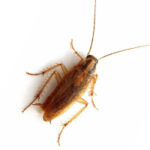
- Size: 13-16mm (smaller than 5¢ coin)
- Appearance: Light brown with two dark longitudinal stripes on their pronotum, growing to approximately 12-15mm in length
- Habitat: Prefer warm, humid areas like kitchens and bathrooms
- Health risks: Highest disease transmission risk due to rapid reproduction
🔎 Identification tip: German cockroaches do not stray far from their hiding places – adults only travel 1-2m from their harborage.
American Cockroach (The Giant)
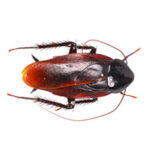
- Size: Up to 53mm (Australia’s largest indoor cockroach, larger than $2 coin)
- Appearance: Reddish-brown with a distinctive yellow band around the head
- Habitat: Prefer dark, humid areas like basements, drains, and sewers
- Health risks: Can spread 33 kinds of bacteria and 6 types of parasitic worms
🔎 Identification tip: Despite their size, they’re excellent fliers and often found in roof spaces.
Australian Cockroach (The Confused Identity)
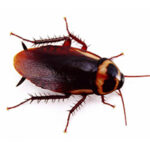
- Size: 23-35mm (50¢ to $2 coin size)
- Appearance: Brown with a yellow line around its head and often confused with the American cockroach, but it’s much smaller
- Habitat: One of the few species that can be found indoors and outdoors, preferring to eat plants
- Health risks: Moderate disease transmission risk
🔎 Identification tip: Very similar in appearance to the American cockroach and may be easily mistaken for it, but note the size difference
Oriental Cockroach (The Water Lover)
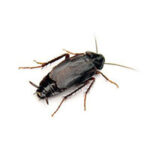
- Size: 20-25mm (similar to $1 coin)
- Appearance: Glossy, dark-brown or black bodies with females growing up to 32mm and males generally smaller at less than 25mm
- Habitat: Prefers cool, damp areas like basements, drains, and under sinks
- Health risks: Carry numerous bacteria and can contaminate food surfaces
🔎 Identification tip: Neither male nor female Oriental cockroaches can fly effectively.
Brown-Banded Cockroach (The Furniture Dweller)
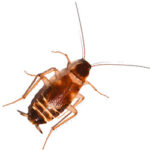
- Size: 11-14.5mm (smaller than 5¢ coin)
- Appearance: Light brown with two light brown bands on their darker brown bodies
- Habitat: Often found in kitchen cabinets and bathrooms, and maybe even behind picture frames
- Health risks: Can trigger asthma and allergies, especially in children
🔎 Identification tip: Unlike German cockroaches, they may dwell and infest the entire building rather than just kitchens or bathroom areas.
Smoky Brown Cockroach (The Night Flyer)
- Size: 35-38mm
- Appearance: Mahogany brown with a shiny, uniform coloration
- Habitat: Prefer outdoor areas but enter homes seeking moisture
- Health risks: Moderate disease transmission risk
🔎 Identification tip: Strong fliers attracted to lights; often found around outdoor lighting.
5 Common Cockroach Identification Mistakes That Cost You Money
Even experienced homeowners make these costly errors:
Australian vs American Cockroach Confusion
The Australian cockroach is very similar in appearance to the American cockroach and may be easily mistaken for it.
The key difference? Size and habitat preferences. The Australian cockroach is much smaller than the American cockroach and less likely to be found in roof spaces.
Size Estimation Errors
Without proper reference points, homeowners often overestimate cockroach size by 30-40%, leading to wrong species identification. Surprisingly, cockroaches are smaller than you think.
Nymph vs Adult Confusion
Young cockroaches (nymphs) look completely different from adults.
German cockroach nymphs are darker and lack the characteristic stripes. It’s important to pay attention to habitat and activity alongside appearance.
Environmental Factor Misreading
Finding a cockroach in your bathroom doesn’t automatically mean it’s a German cockroach. Oriental cockroaches also love moisture!
Seasonal Behavior Misunderstanding
Some species are more active during certain seasons, leading to temporary identification confusion.
For example, species like the Australian cockroach tend to be more active during the warmer months of Spring and Summer, especially in humid conditions. On the other hand, German cockroaches are less picky and can be active all year round and can infest homes regardless of the season.
Cockroach Species-Specific Infestation Warning Signs
Pay attention to these signs of a cockroach infestation—most of the time a person may never see a cockroach before a few cockroaches turns into a full-blown infestation:
German Cockroaches
- Small, dark specks in kitchen drawers (droppings)
- Sweet, musty odor in heavily infested areas
- Egg cases (oothecae) in warm, hidden spots
- Grease smears along walls and surfaces
American Cockroaches
- Large, blunt-ended droppings with ridges
- Strong, oily odor
- Shed skins in basements or utility areas
- Damage to book bindings and paper
Oriental Cockroaches
- Irregularly shaped droppings
- Strong, unpleasant “musty” smell
- Slow-moving insects near water sources
- Egg cases in damp, protected areas
Brown-Banded Cockroaches
- Small, pepper-like droppings
- Egg cases glued to furniture undersides
- Staining on walls and surfaces
- Found in bedrooms and living areas
Why Professional Cockroach Identification Saves Time—And Money!
Professional pest control technicians achieve 94% accuracy in cockroach species identification compared to 43% for homeowners. Here’s when you should call the experts:
- Multiple Species Present: Queensland homes often host 2-3 different cockroach species simultaneously, each requiring different treatment approaches.
- Large Infestations: Once cockroach populations exceed 100 individuals, species-specific treatment becomes critical for success.
- Recurring Problems: If you’ve already tried DIY treatments without success, professional identification can reveal why your approach isn’t working.
- Health-Sensitive Individuals: Homes with asthma sufferers, elderly residents, or young children need faster, more effective treatment.
- Commercial Properties: Businesses face higher stakes—professional cockroach identification prevents costly shutdowns and reputation damage.
At Bundilla Pest Control, our technicians use advanced identification techniques and have eliminated cockroach infestations for over 1,000 Sunshine Coast to North Brisbane properties.
Ready to solve your cockroach problem professionally?
For expert identification and treatment, choose our comprehensive Deluxe Pest Control Package.
Quick Cockroach Identification Summary
- Look for size (German = small, American = large)
- Look for color patterns (Australian = yellow head stripe, Oriental = dark/black)
- Pay attention to habitat preferences (German = kitchen, Oriental = basements)
Remember, correctly identifying your cockroach species is the first step toward effective elimination! While this guide provides the knowledge you need for basic identification, professional confirmation ensures you’re using the right treatment approach from day one.
Don’t let cockroaches take over your Queensland home. Book our Deluxe Pest Control Package today and get guaranteed results with our species-specific treatment plans.
We serve homes and businesses in the Sunshine Coast, the Caboolture and Morayfield area, and North Brisbane with expert cockroach identification and elimination services. Our team of certified technicians provides guaranteed results with environmentally responsible treatment methods.
Questions About What Type Of Cockroach You're Dealing With?
Contact our identification experts and take the first step toward a cockroach-free home.
